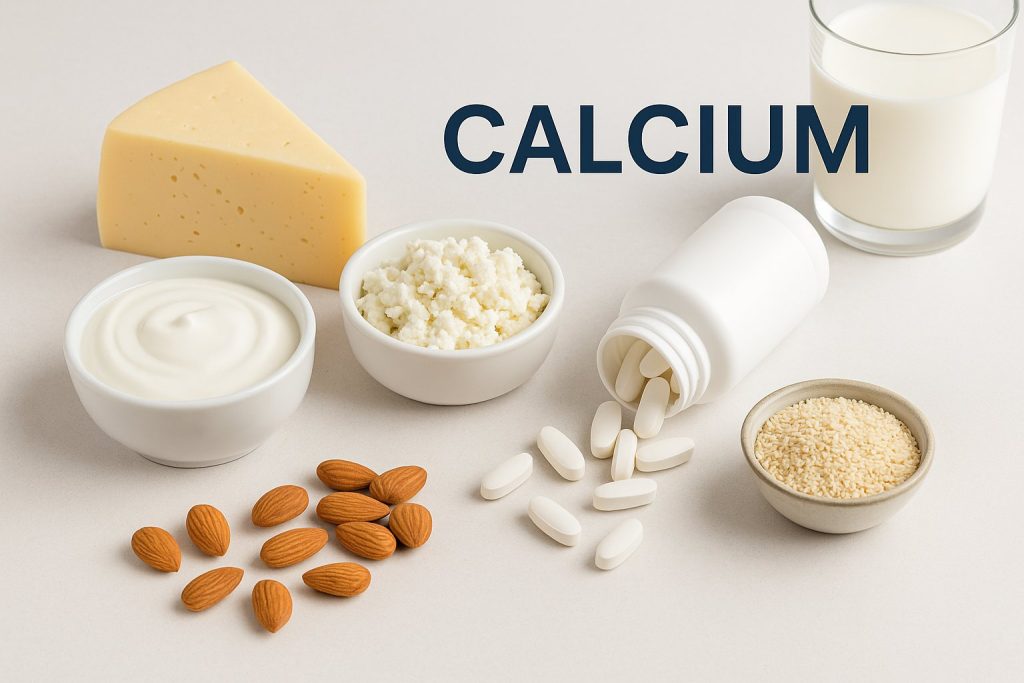Calcium: The Essential Mineral for Strong Bones and Beyond

What Is Calcium?
Calcium is the most abundant mineral in the human body, primarily stored in the bones and teeth. It plays a critical role not only in maintaining skeletal strength but also in muscle function, nerve transmission, and hormonal secretion.
About 99% of the body’s calcium is found in bones and teeth, while the remaining 1% circulates in the blood, performing essential biological functions.
Why Calcium Remains Vital in 2025
Despite its long-established importance, calcium deficiency continues to be a global concern—especially among women, older adults, and individuals on restrictive diets. In 2025, calcium is not just seen as a bone health nutrient, but as a key factor in overall metabolic balance, muscle maintenance, and aging well.
Major Functions of Calcium
- Bone mineralization
Calcium combines with phosphate to form hydroxyapatite crystals that give bones strength and structure. - Muscle contraction
Calcium ions help regulate muscle fibers, including the heart. - Nerve signaling
It’s essential for transmitting messages between the brain and other parts of the body. - Blood clotting
Plays a role in forming fibrin, the protein involved in clot formation.
Dietary Sources of Calcium
You can obtain calcium from a variety of both animal and plant-based sources:
- Dairy products: milk, yogurt, cheese
- Leafy greens: kale, bok choy, turnip greens (note: spinach has calcium but is less bioavailable)
- Fortified foods: orange juice, cereals, plant-based milks
- Sardines and salmon (with bones)
- Tofu and tempeh, especially when calcium-set
- Almonds and sesame seeds
Calcium Supplementation: What to Consider
While it’s ideal to get calcium from food, supplementation can help individuals at risk of deficiency. In 2025, many formulations combine calcium with vitamin D or vitamin K2 to improve absorption and direct calcium to the bones rather than soft tissues.
Forms to look for:
- Calcium citrate – well-absorbed, even on an empty stomach
- Calcium carbonate – more concentrated, but requires stomach acid to digest
- Plant-based calcium – derived from red algae or seaweed, often combined with co-factors
Final Thoughts
Calcium is far more than just a mineral for growing children or aging adults. It supports numerous systems in the body and remains a pillar of preventive health. A balanced diet with diverse sources of calcium, paired with co-nutrients like vitamin D and K2, ensures optimal absorption and long-term skeletal resilience.




